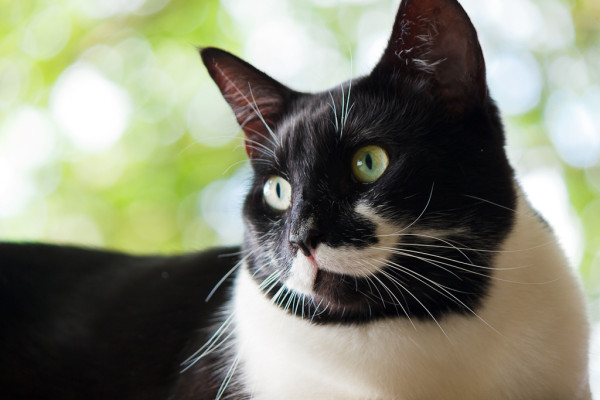
Can You Be Nomadic with Pets?
October 10, 2012 | Nomad Life, Relationships, with pets
I have a broad range of experience with living a more nomadic or location-independent lifestyle, but there are still some things I haven’t experienced first-hand. A recent conversation opened my eyes to how challenging a nomadic lifestyle can be for pet owners, so I decided to bring in a guest expert to shed some light on the subject! I hope you find this post helpful and inspiring.
Almost there.
Our house is on the market. We’re making weekly runs to Goodwill. My family’s nomadic dream is just within reach.
Soon we will be free. Free to boldly travel anywhere and everywhere we desire. Free to . . .
But wait. What is that nagging at the back of my mind? What is that sense of “unfinishedness” that I am experiencing?
Oh, yes. That burning question: Can one truly be location independent when one owns two cats and a dog?
I am no expert on coordinating pets and travel. We’ve been going on journeys around the world for quite a few years now, and it has always been an issue for us, but we’ve never let the challenges stop us from pursuing our dreams. We’ve handled the situation differently each time, depending on the circumstances surrounding each trip. And, as anyone with pets can understand, it turns out to be not just a logistical puzzle but an emotional undertaking as well.
****
The main concern, of course, is the animal’s welfare. And the first decision to make is whether the arrangement will be on a temporary or permanent basis, which will in large part be determined by the length of your trip.
Are you just going on vacation? Or are you embarking on a round-the-world-no-roots-adventure-of-a-lifetime?
Up to this point, we’ve employed various temporary provisions. Perhaps they’ll serve as possible options for you to consider as you create your own nomadic lifestyle.
1. TRAVEL WITH PETS BY CAR
We’ve driven the Alaska-Canada highway (the AlCan) from Anchorage to Seattle, a 2,400-mile road trip extraordinaire, twice—each time with two cats (not the felines we have now) and one dog (same canine we have now).
Get yourself an RV, get live animal crates and bungee cords, make frequent stops, and you’re good to go!
(Oh, and bring extra gas. Trust me on this one.)
We also do two seven-hour car trips with our beasts every winter (since we spend a couple of months each year in a snowy location up north).
We once “misplaced” one of our cats (Harlowe) in our SUV. She’d been howling and scratching at the carrier, so we let her out (mistake). Once found, she calmly curled up on a pillow on my lap and slept (no, I wasn’t driving).
2. TRAVEL WITH PETS BY PLANE
We’ve flown with our pets too (only within the U.S., though). We’ve had pets both in the cabin and below deck.
Health certificates are always required and there are specific crate size requirements as well. The animal must also be fed/hydrated within strict timelines, so be sure to check each airline’s rules.
The first time we flew with a cat, we tranquilized her. We never did that again after seeing how many days it took her to get back to normal (and we’d even cut the dose in half!). Talk to your vet for guidance on this one.
During one trip, the flight attendant handed me my pets’ boarding slips just before takeoff (a reassurance that my animals were safely tucked on board).
Imagine my distress when she only gave me TWO slips for my THREE pets! She spent the rest of the flight trying to calm my fears that one had been left behind. (By the way, all three were accounted for when we arrived at our destination.)
We have come oh-so-close to traveling abroad with our animals, but have shied away from this option so far.
Imagining the grueling reality of 10–12 hour flights, switching planes, airline delays and errors . . . it just wasn’t worth it to us for our so-far temporary stays.
But it can be and is done all the time (especially when moving permanently overseas). Each country handles entry with a pet differently. Research these requirements (including quarantine information) carefully before buying your tickets.
3. PET SITTER
Although a more expensive option, a pet sitter is a fabulous alternative for your pampered animals. I have felt the most relaxed at leaving my furry companions behind when I knew a responsible, loving person was there with them each and every day during my absence.
4. DAILY CHECK-INS
We’ve also left our pets at home and had trustworthy neighbors care for them. They typically checked in on them once or twice a day, and we paid them based on the local boarding facility’s fees. And speaking of . . .
5. BOARDING FACILITIES
We’ve used boarding facilities twice, and I personally am not comfortable going this route again. I am certain there are wonderful kennels out there, but because our experiences were less than ideal, I’ve never revisited this option. (It’s worth noting that both of the facilities we used were in geographical areas with limited choices.) My chief complaints? The enclosures at one facility were dirty, dark, and just generally depressing. And, after a stay at the other kennel, one of our dogs contracted a viral illness and was quite sick upon his return home.
We once left our (then two) Karelian Bear Dogs at the breeder’s inAlaska and they both had a fabulous time! The best part about the arrangement was that we didn’t have to pay a dime; it was part of our breeder’s commitment to her clients. (We brought her back a lovely pearl necklace from Vietnam to show our appreciation.)
****
We own more than one home and have traveled extensively and frequently in the last decade as a family. But we’ve always had one permanent residence. We will be giving that up this year once this property sells.
I guess in my mind “house = roots” and “no house = wings.” Although our ties have been tenuous at best, selling this house will truly mean no more roots for us . . .
So how does one reconcile a vagabond life with the care/responsibility of pets?
I’m not sure. Still working that one out. I do know that it’s getting harder and harder to arrange pet care as we keep extending our time away.
It’s possible that our twelve-year-old dog, Jag (who still runs around like a puppy), will be going to live with my sister-in-law in Oregon.
Which is nice . . . right? But the idea makes me sad, and I can’t help feeling irresponsible as well. The same question keeps running through my head: “What is best for Jag? What is best for Jag? What is best for Jag?”
Our pets are definitely part of the family unit, and it hurts to make changes that affect those relationships.
We’ll work it out, though. We always do. The animals will be OK. So will my family and I.
And so will you and your pet.
(Mr. Smith, my black-and-white cat, is lying on my arm as I type this. I think he senses a new adventure on the horizon . . .)
April M. Lee is a certified wellness coach with a masters degree in mental health counseling. She works with women struggling with the emotional aspects of food and eating issues. She is also a seasoned homeschooling parent with a nomadic lifestyle, and enjoys coaching other vagabond moms who are trying to combine both geographical and educational voyages. April offers both 1:1 and group coaching via telephone, Skype, and email. To learn more about April, visit her website: www.essence7wellness.com.
Here are a few more resources about traveling with pets:
What to Know When Traveling with Your Pet (New York Times Practical Traveler)
U.S. Department of Agriculture information on traveling with pets and bringing them in and out of the country
What about you? Do you think you can be nomadic with pets? What scenario do you plan to try or have you found works best for you and your pets?
Get the Top 10 Logistical Things You Need to do before becoming a nomad
(That Aren't What You Think)
When you download the guide, you’ll also be subscribed to the Nomadtopia newsletter. Your email is safe with me and you can unsubscribe anytime. View our Privacy Policy.



